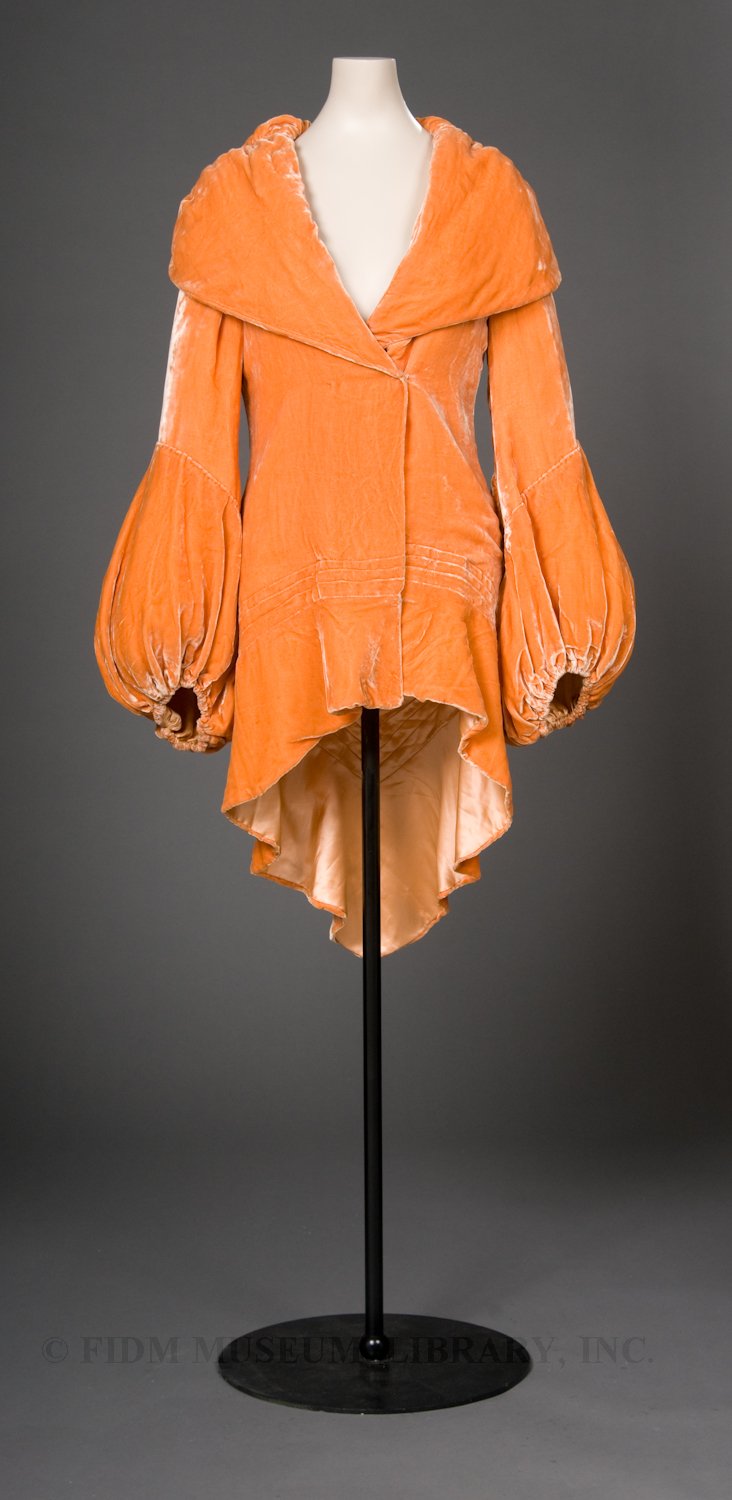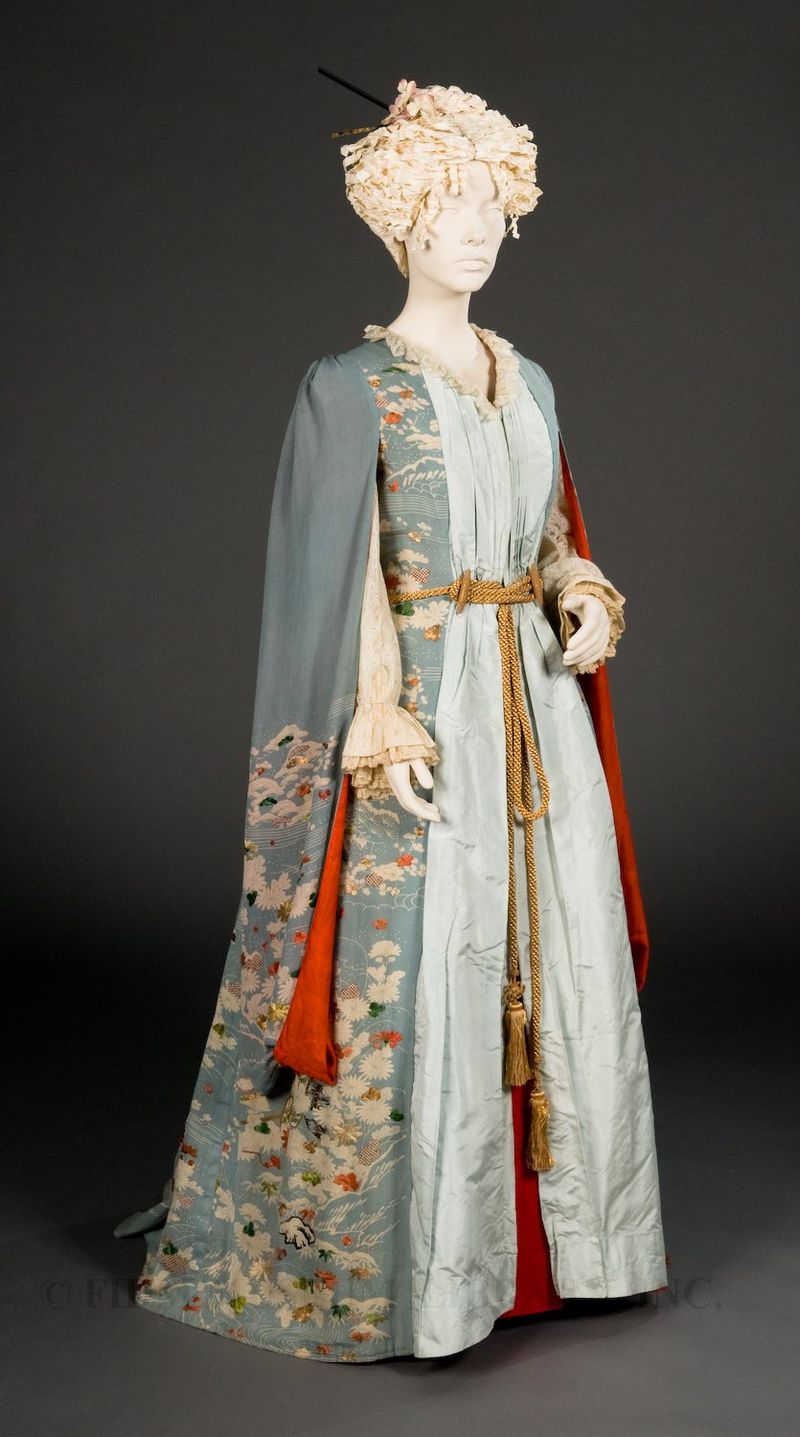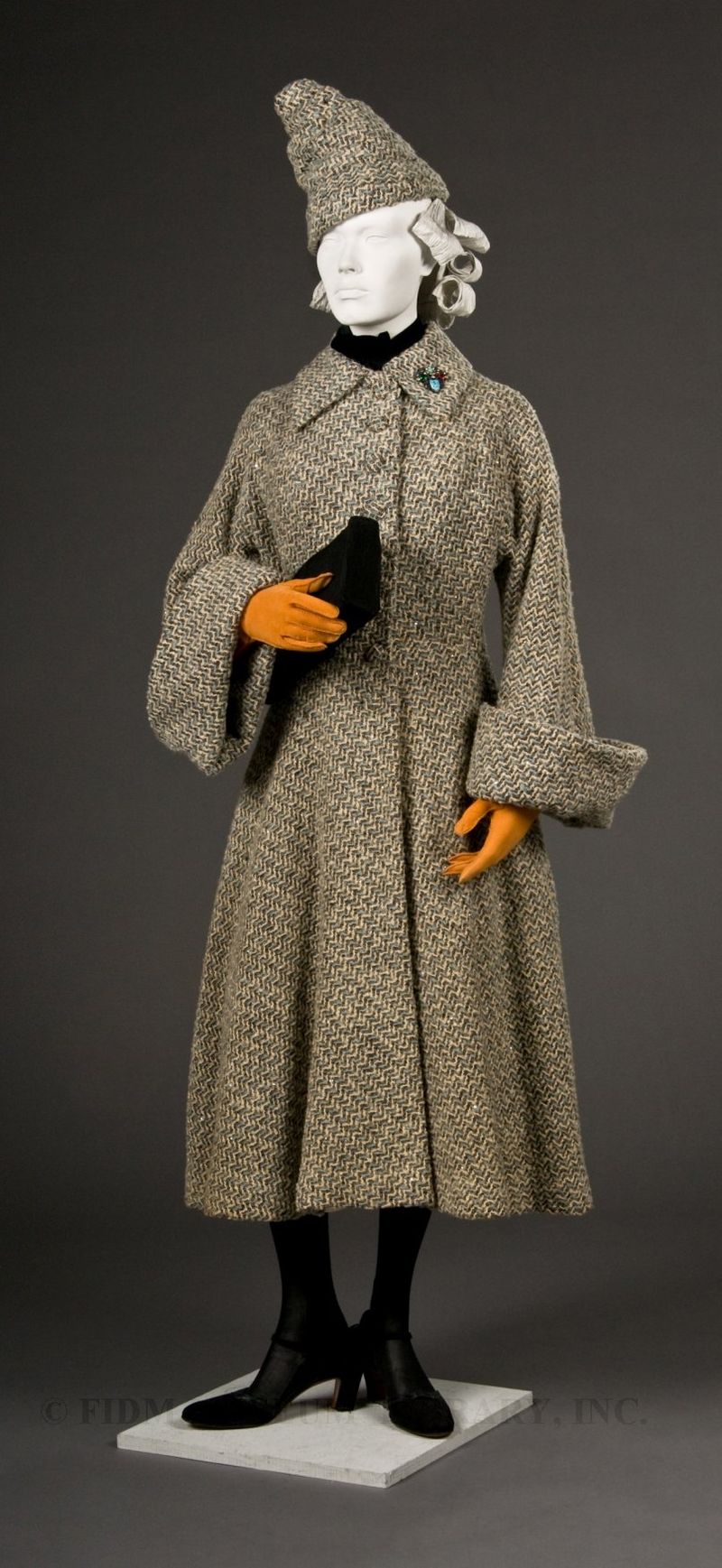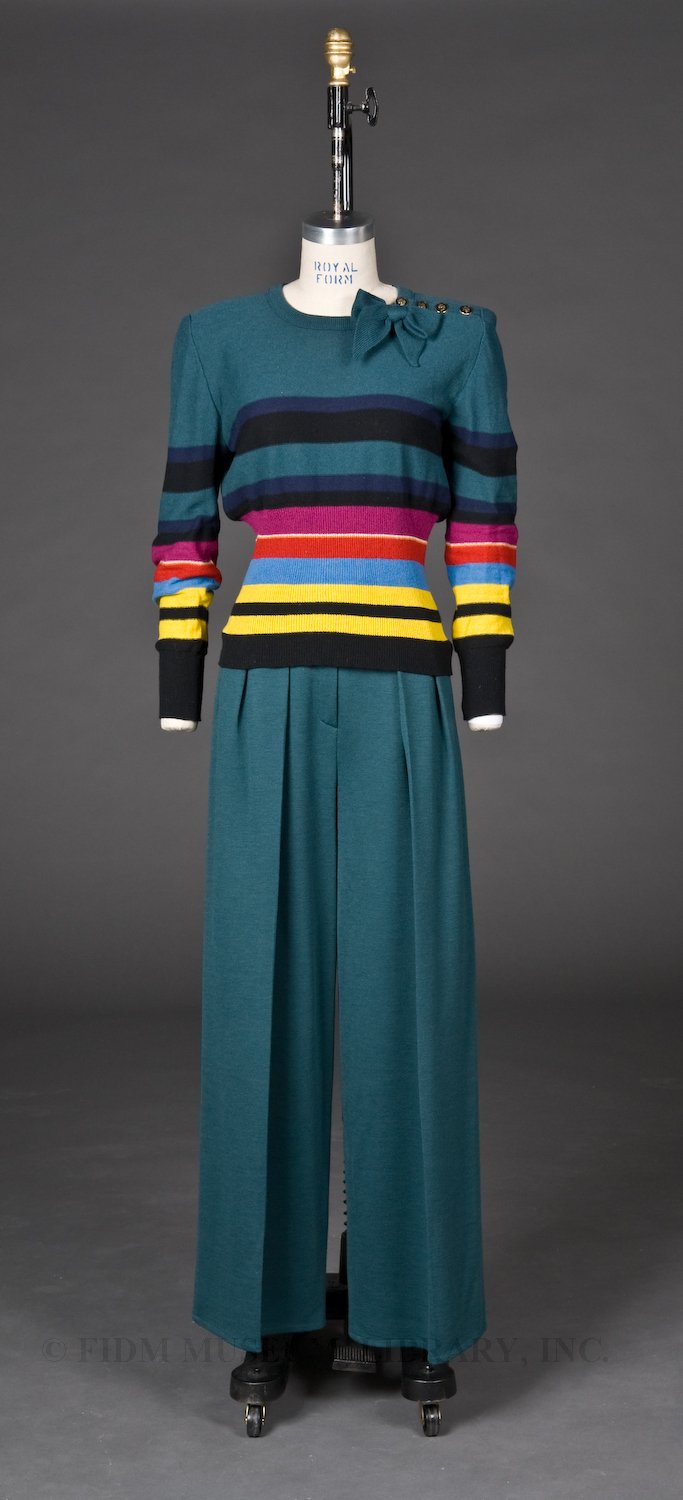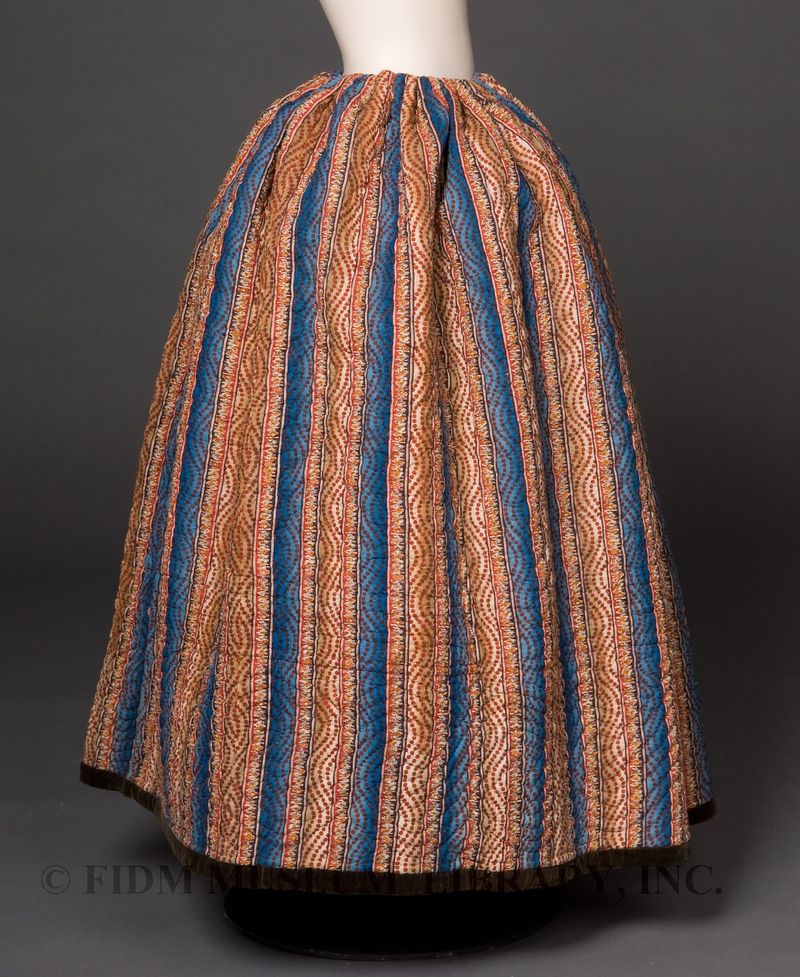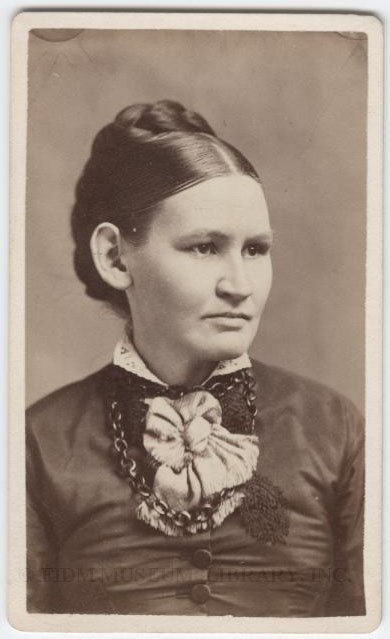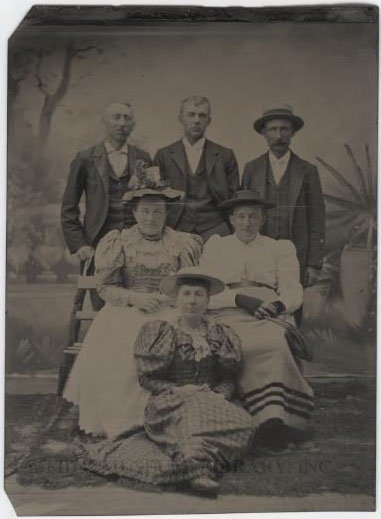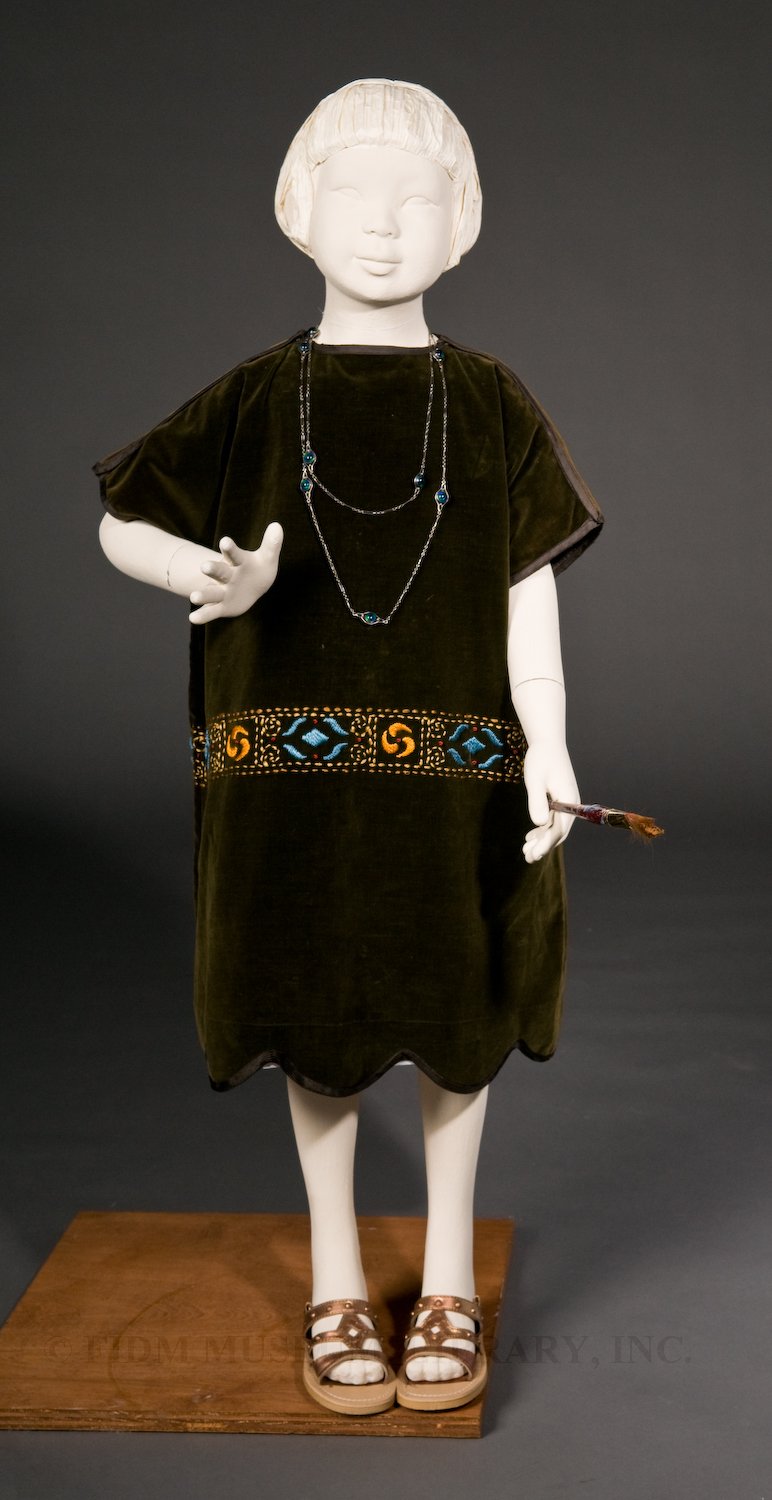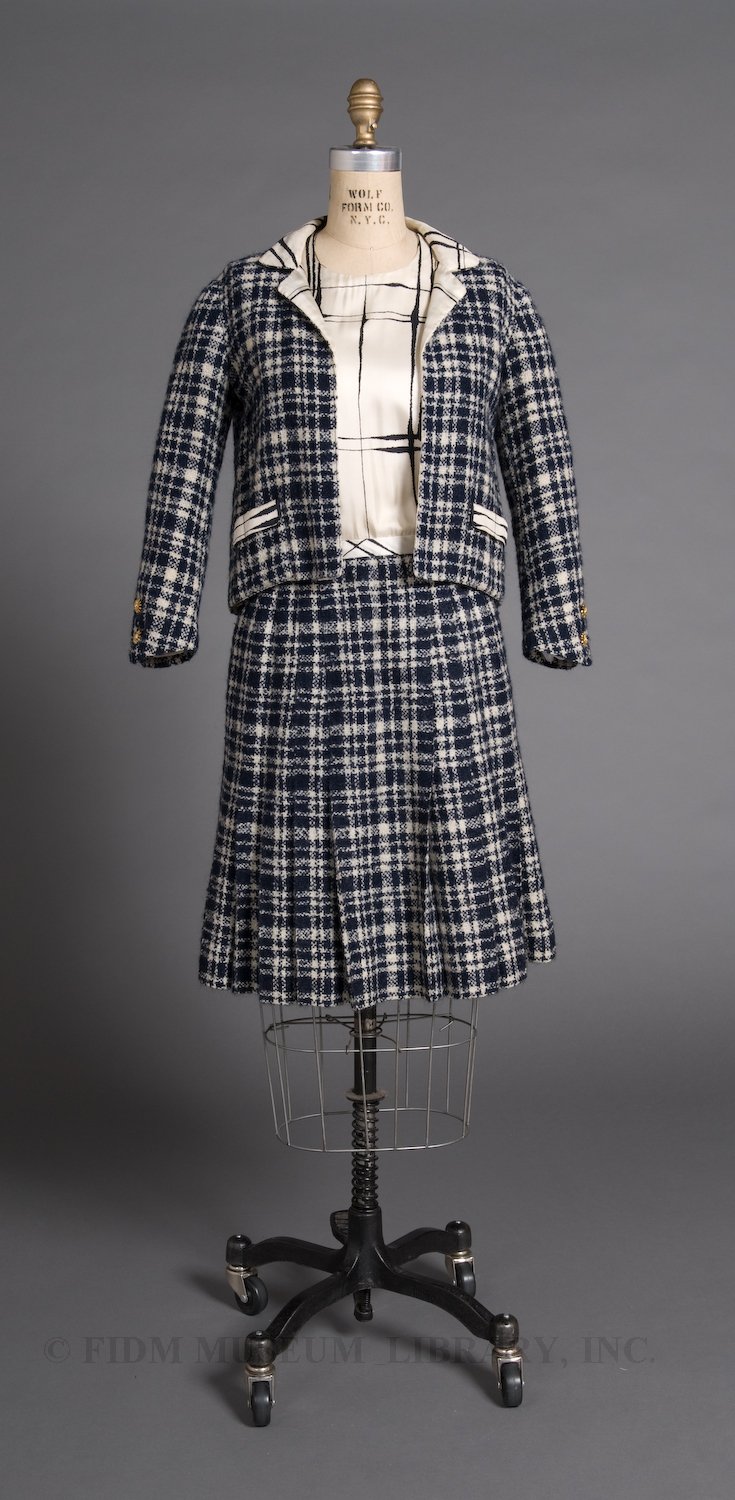This website uses cookies so that we can provide you with the best user experience possible. Cookie information is stored in your browser and performs functions such as recognising you when you return to our website and helping our team to understand which sections of the website you find most interesting and useful.
Evening gowns of the 1930s were usually floor-length and clung to the body. Made of silk or velvet, they were cut on the bias and often exposed a swath of bare back or shoulder. Of course, this exposure meant that a fashionable evening coat was... Read Article ››
Marimekko
With its oversized imagery and brightly clashing colors, Marimekko textiles are unmistakable. The Finnish company began in 1951 as a textile design firm specializing in hand silk-screened cotton fabric. The patterns created by Marimekko designers were a... Read Article ››
Ski in fashion
Blouse (detail)1957-1960Mr. DinoGift of Steven Porterfield2007.897.20 Until the 1950s, ski wear consisted of baggy woolen pants and knitted sweaters, topped with a bulky wool overcoat. Though warm and functional, these clothes did nothing to flatter the... Read Article ››
Smocked frock
Between the 1750s and the late 19th century, rural Englishmen wore voluminous smocks when working outdoors. Usually made of rough homespun, most smocks had long, full sleeves and ended at mid-calf. Though entirely functional, smocks often featured decorative... Read Article ››
Kimono dressing gown
Japanese styles are always attractive in negligees.-The Delineator, April 1903 Kimono dressing gownc. 1885Gift of Anonymous... Read Article ››
Details Make the Woman
During the Great Depression (1929-1941), many women could not afford to purchase new clothing on a regular basis. Instead, women exploited the potential of accessories to update an old frock. Carefully coordinated gloves, hat, handbag and shoes could be used... Read Article ››
Sonia Rykiel
Sonia Rykiel's signature garment is the striped sweater. Her earliest versions were shrunken, body-hugging "poor boy" sweaters with horizontal stripes designed in the early 1960s. The use of soft, knit fabric (often striped) became a trademark,... Read Article ››
Quilted petticoat
Before the introduction of the cage crinoline in 1856, women typically wore multiple layers of petticoats. The petticoat layers (sometimes as many as 6!) not only shaped the skirt into a fashionable bell-shape, but also provided warmth. Between about... Read Article ››
Fashion history through photographs, part II
Part two of FIDM Museum Collections Manager Christina Johnson's examination of how photographs can be used to study fashion history. Carte de visitec. 1875-77Gift of Steven Porterfield2009.897.103Carte de visites were produced from 1854 through the 1880s.... Read Article ››
Fashion history through photographs, part I
Today's post was written by Christina Johnson, FIDM Museum Collections Manager. Part II will be posted on Wednesday, December 9. Enjoy! Tintypec.1895-1897Gift of Stephen Porterfield2009.897.74 Photographic portraits are valuable resources for... Read Article ››
Bohemian dress for children
Bohemians were figures of both fascination and fun in the late 19th and early 20th centuries. A typical Bohemian was often artistically or politically inclined and was willing to step outside the bounds of conventional society. The highest Bohemian ideal was... Read Article ››
Coco Chanel
Gabrielle "Coco" Chanel (1883-1971) distinguished her design aesthetic through a strict insistence on comfortable, lightweight garments and a pared-down silhouette. Chanel's interest in simplicity is seen in her earliest millinery designs from... Read Article ››

